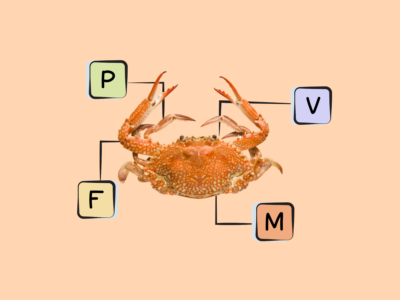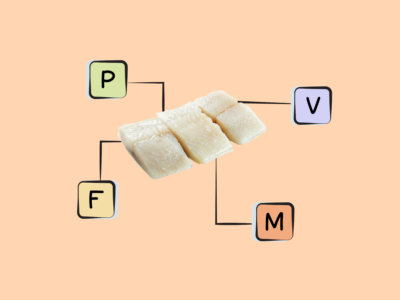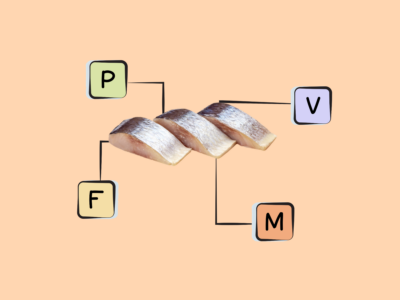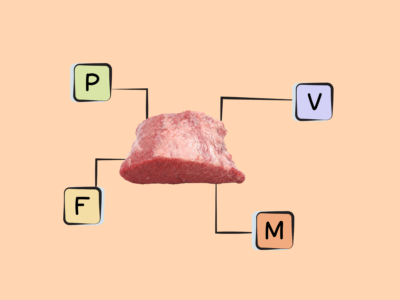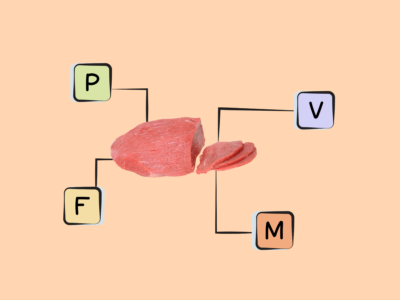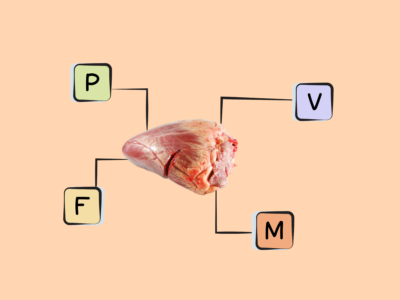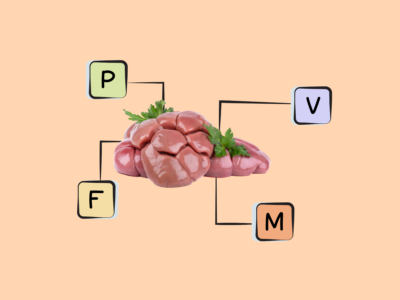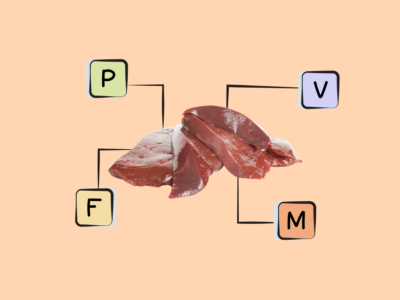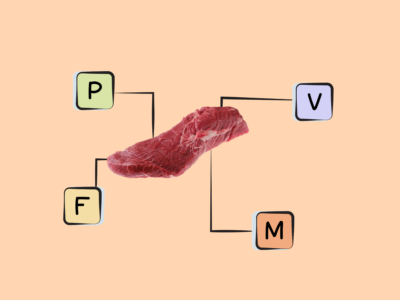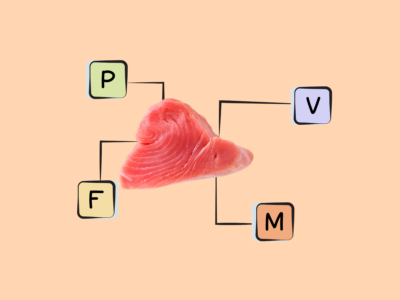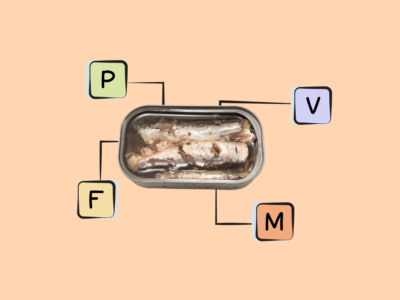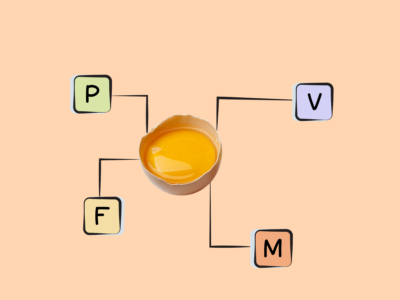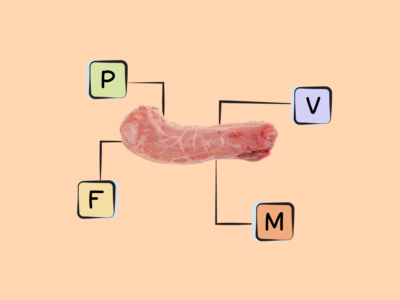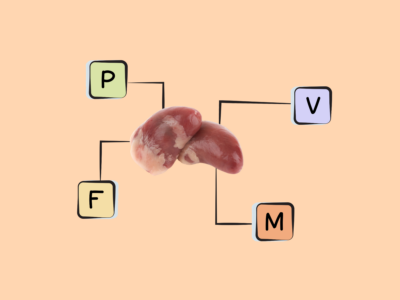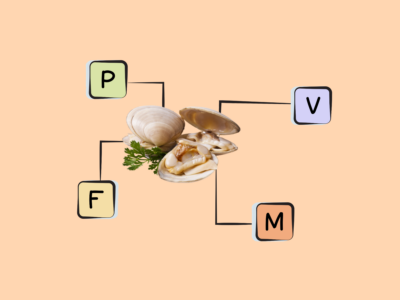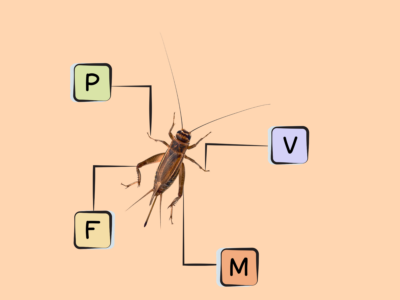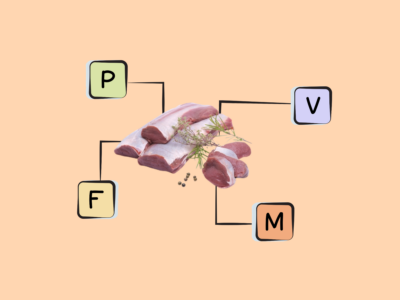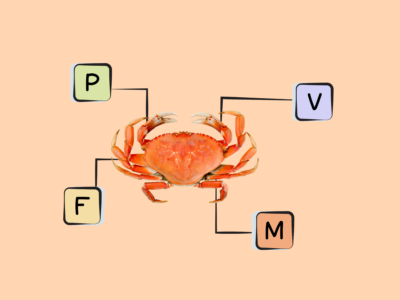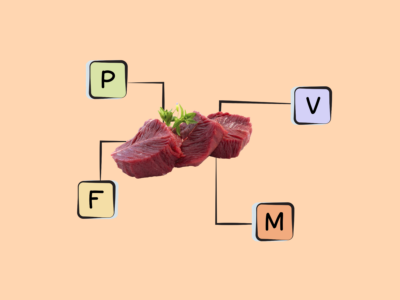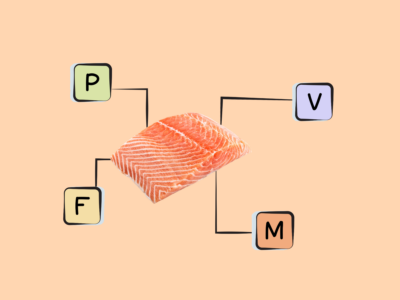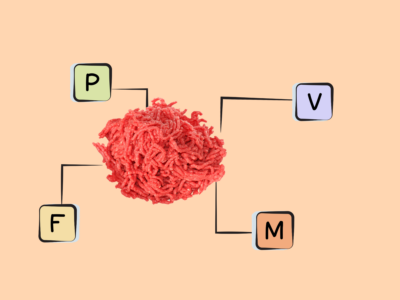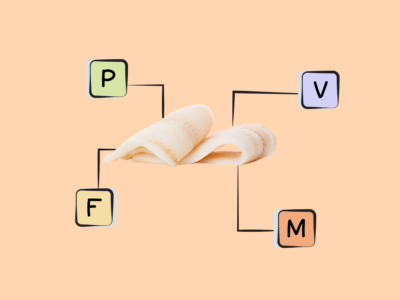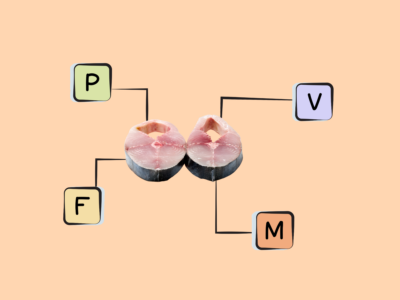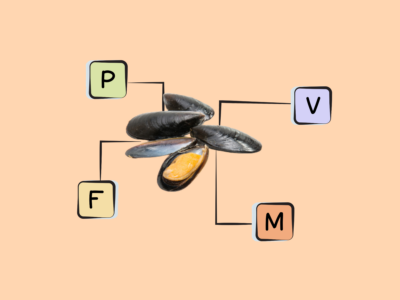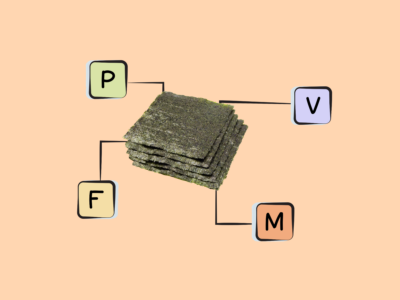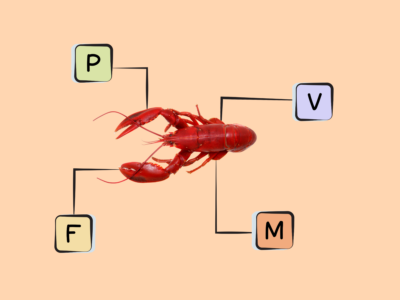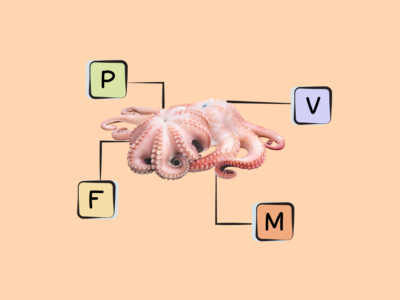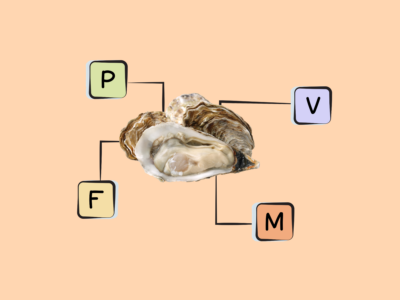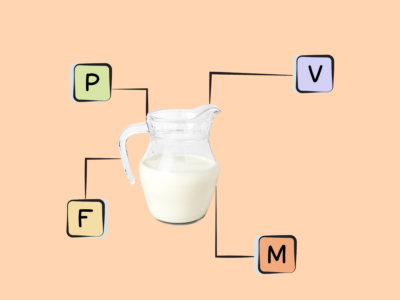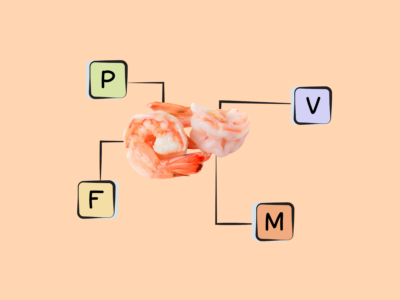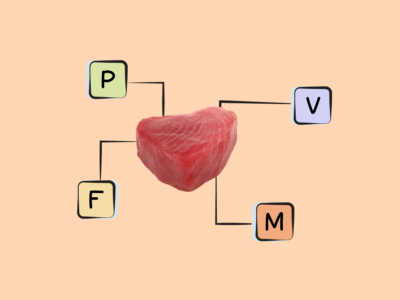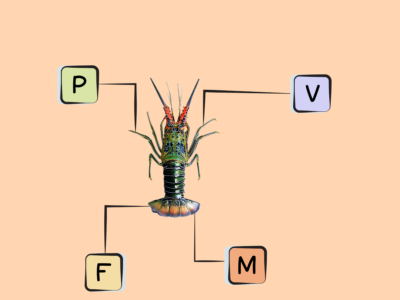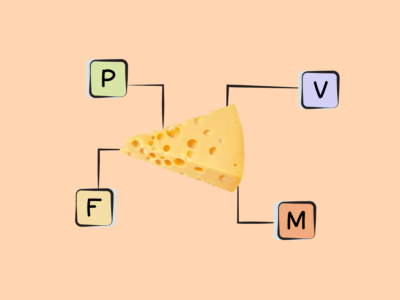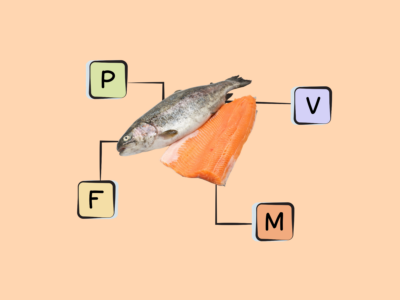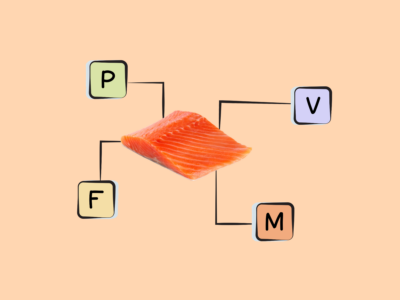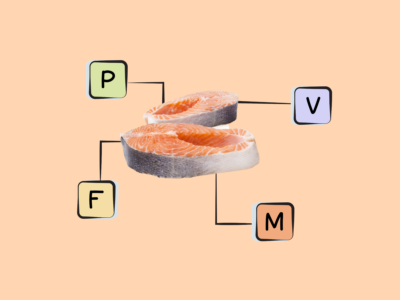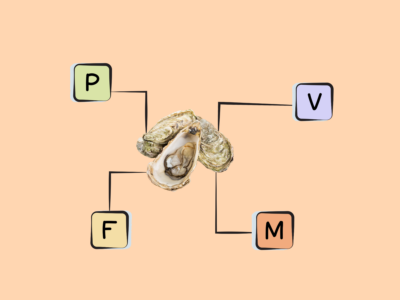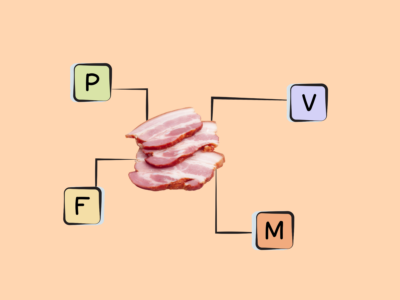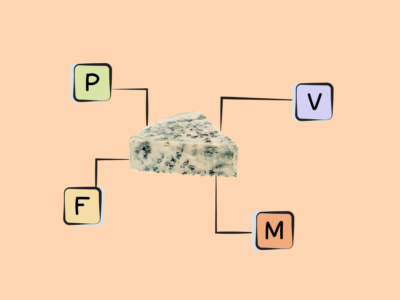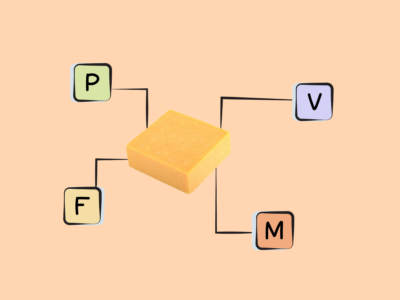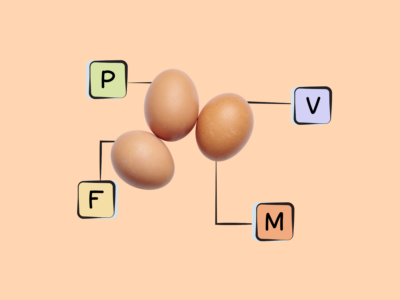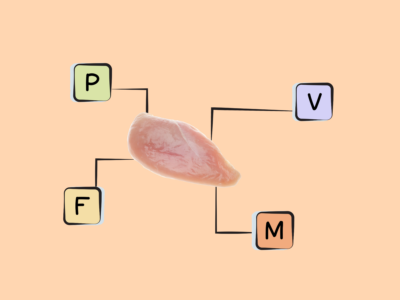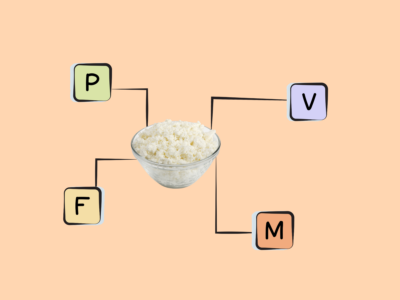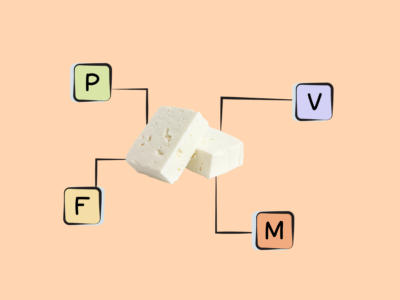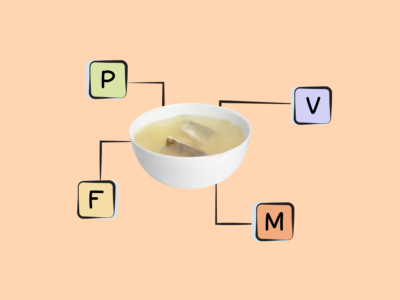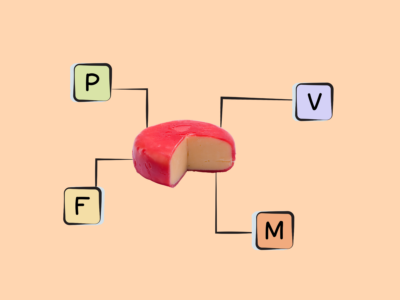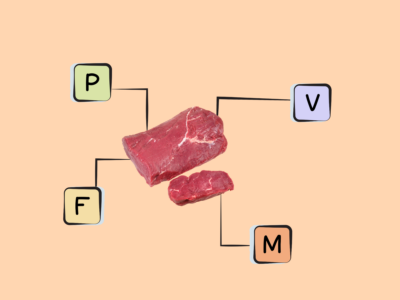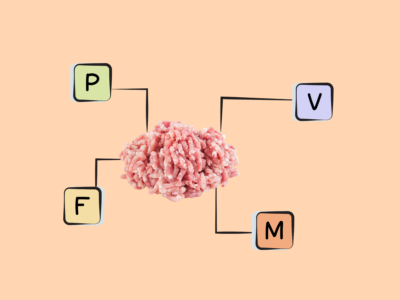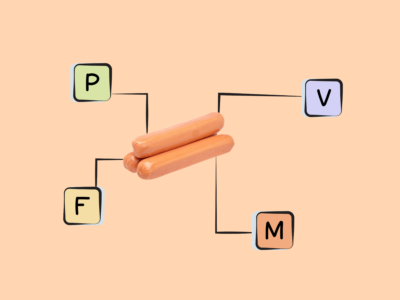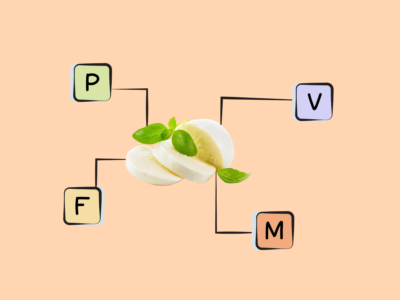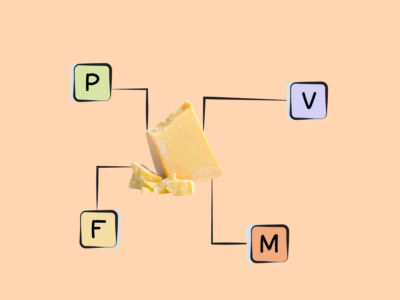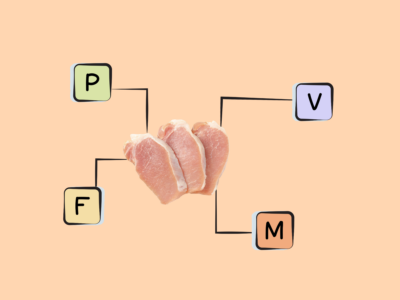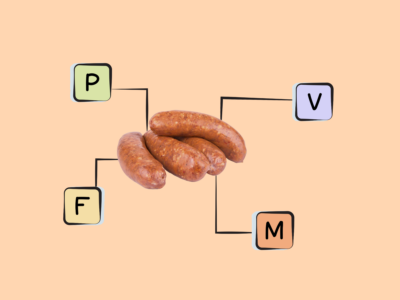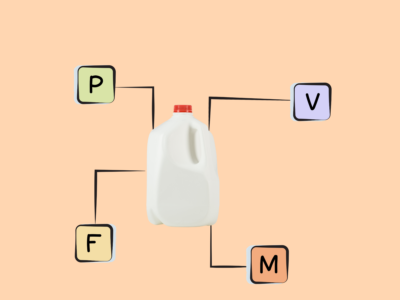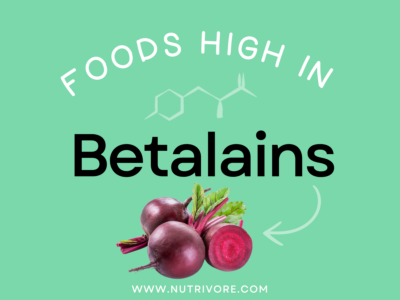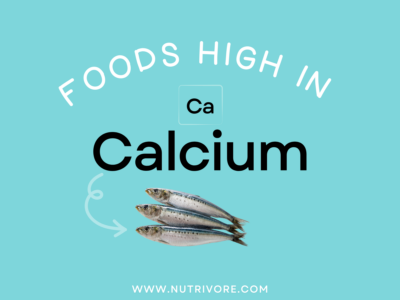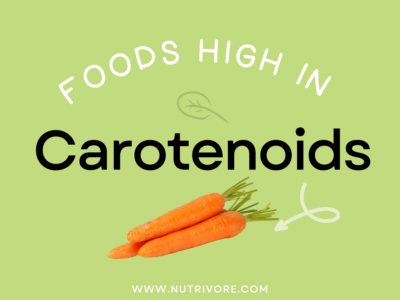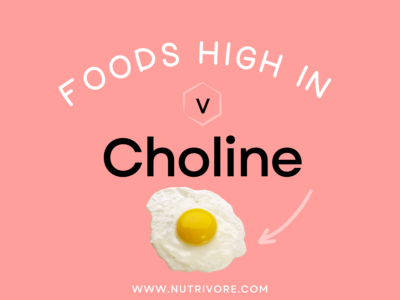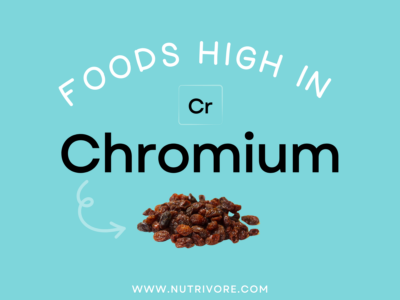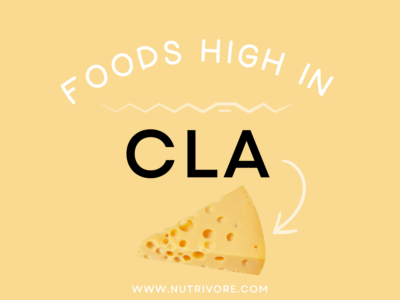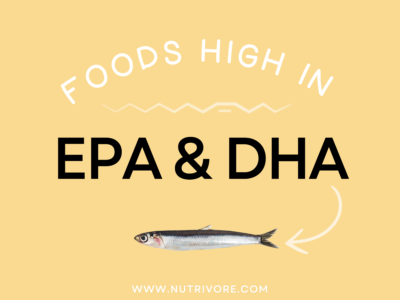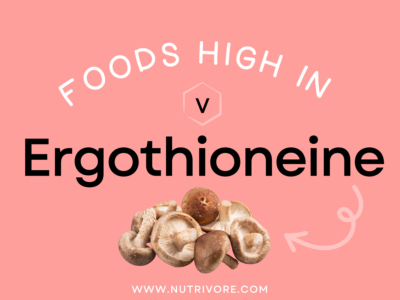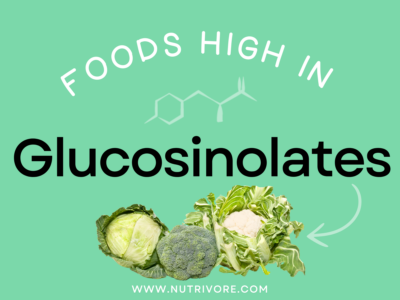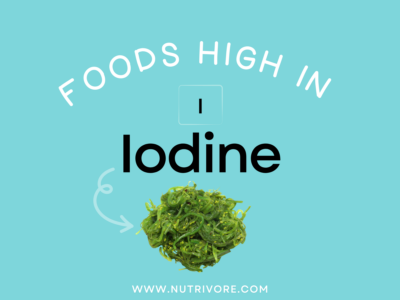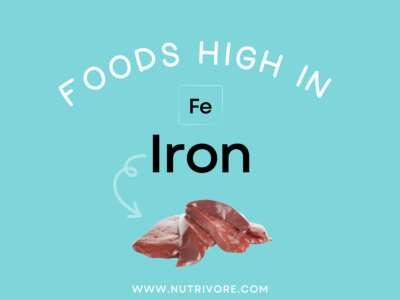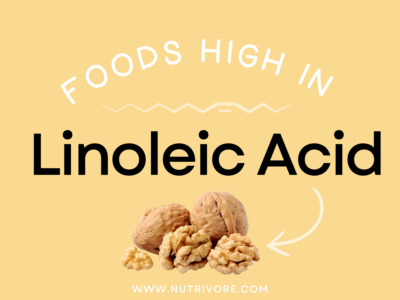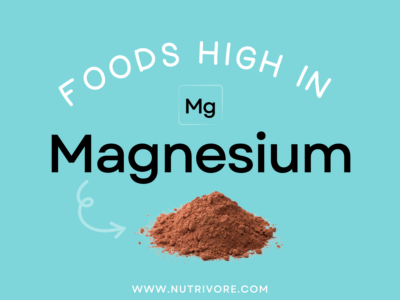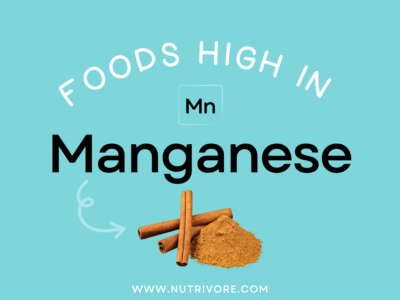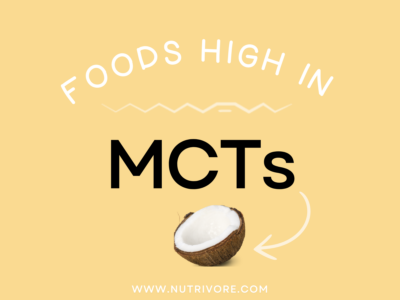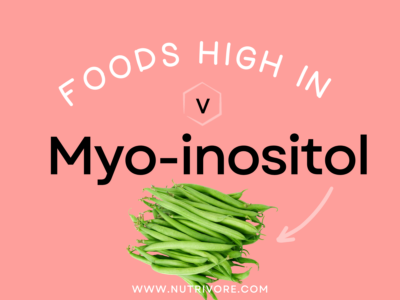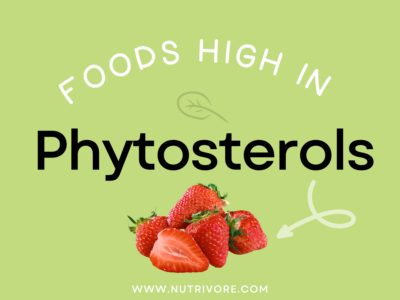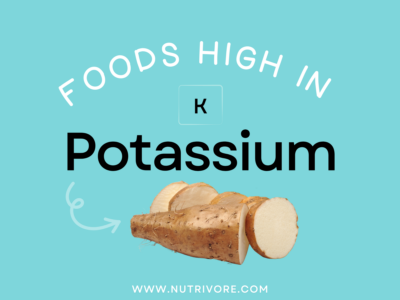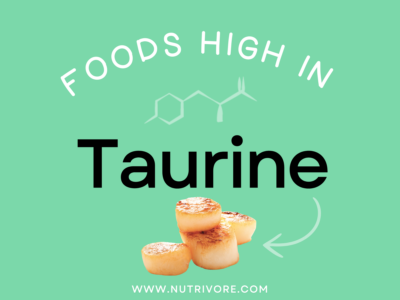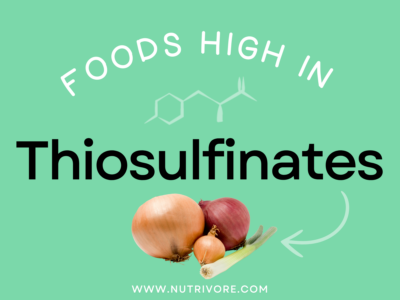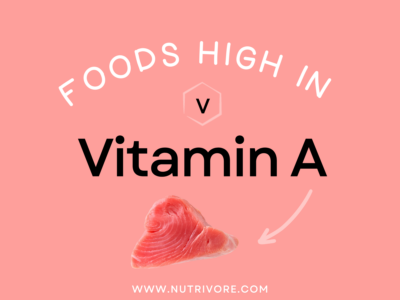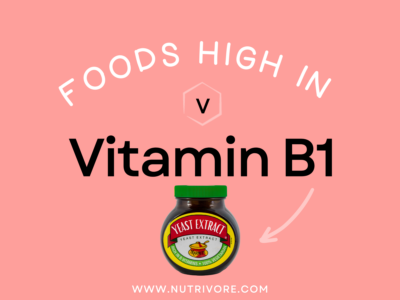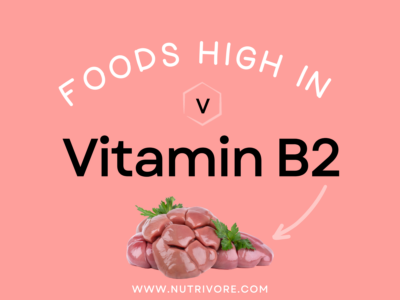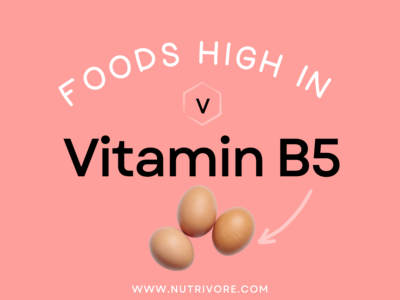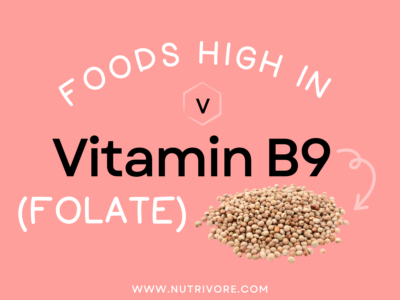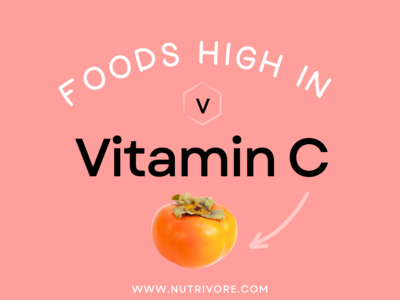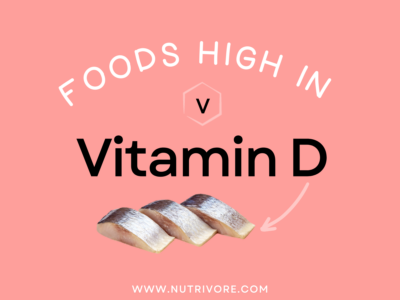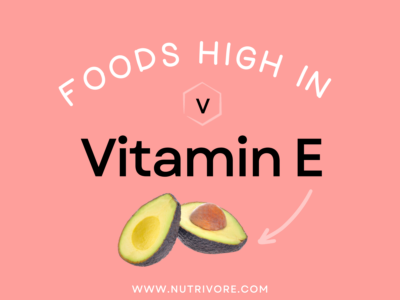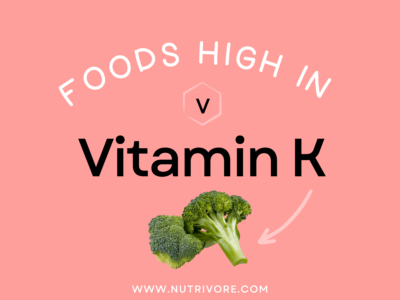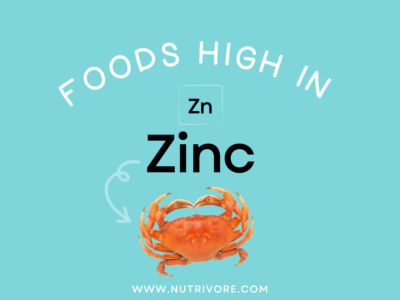Table of Contents[Hide][Show]
Top 5 Common Food Sources of Vitamin B12
Looking to get more mcg of vitamin B12 in your diet? Look no further! My team and I have crunched the numbers and did all the math to determine the top 5 common food sources of vitamin B12, per serving. Getting vitamin B12 from our diet through healthy eating is important since a large collection of studies show that getting nutrients from dietary supplements doesn’t improve health outcomes compared to getting nutrients from foods!
| Rank | Food | Nutrivore Score | Serving Size (Raw) | Vitamin B12 (µg/serving) | % Daily Value |
|---|---|---|---|---|---|
| 1 | Liver, Average1 | 4192 | 3.5 oz / 100 g | 52.3 | 2179 |
| 2 | Kidney, Average2 | 2558 | 3.5 oz / 100 g | 29.5 | 1228 |
| 3 | Octopus, Common | 1618 | 4 oz / 115 g | 23.0 | 958 |
| 3 | Nori (Laver) Seaweed | 3910 | 1 cup | 16.1 | 669 |
| 4 | Oysters, Average3 | 2759 | 4 oz / 115 g | 15.7 | 654 |
2Kidney, average includes beef, lamb, and pork kidney.
3Oysters, average includes Eastern (farmed and wild) and Pacific oysters.
Want to know more about this important vitamin including what vitamin B12 does in the body, how much vitamin B12 we need, what happens if we have low vitamin B12 levels or if we get too much, and even more awesome rich food sources of vitamin B12? Keep reading to learn all there is to know!
Learn What Foods Are the Best Sources of Every Nutrient

The Top 25 Foods for Every Nutrient
The Top 25 Foods for Every Nutrient e-book is a well-organized, easy-to-use, grocery store-friendly guide to help you choose foods that fit your needs of 43 important nutrients while creating a balanced nutrient-dense diet.
Get two “Top 25” food lists for each nutrient, plus you’ll find RDA charts for everyone, informative visuals, fun facts, serving sizes and the 58 foods that are Nutrient Super Stars!
Buy now for instant digital access.
What Is Vitamin B12 and What Does It Do?
Vitamin B12, also known as cobalamin, is a water-soluble vitamin produced exclusively by microorganisms. Although it comes in multiple forms, only two are used by the human body: methylcobalamin, and 5-deoxyadenosylcobalamin. Vitamin B12 serves as a cofactor for important enzymes involved in methionine metabolism, hemoglobin synthesis, red blood cell production, folate metabolism, neurotransmitter synthesis, and DNA synthesis, giving vitamin B12 a particularly important place in nervous system health.
As a B vitamin, vitamin B12 is also involved in energy metabolism—specifically, in synthesizing an important intermediate called succinyl CoA, which allows some branched-chain amino acids and fatty acids to enter the cycle. It’s also capable of lowering homocysteine levels (a risk factor for cardiovascular disease), although studies haven’t supported a benefit of vitamin B12 supplements on actual cardiovascular outcomes.
Research suggests vitamin B12 could be protective against dementia, Alzheimer’s disease, and depression, possibly via its effects on homocysteine levels and neurotransmitter production. However, trials in humans have generally used a mixture of B vitamins rather than vitamin B12 in isolation when studying these conditions, making the individual health effects of vitamin B12 unclear. It’s also shown interesting links with cancer, with low vitamin B12 rates potentially impairing folate metabolism and leading to a reduced ability for the body to repair DNA damage (a cancer risk factor).
Learn more about vitamin B12 here.
Vitamin B12 Deficiency
A 2011 study evaluated American’s usual nutrient intake including nutrients that are naturally-occurring in foods, from fortified and enriched foods, and from supplements. The results indicated that 7.2% of American adults usual diet falls short of the Estimated Average Requirement (EAR) for vitamin B12 intake.
Groups At Risk
Those at higher risk of vitamin B12 deficiency include:
- those following vegetarian and vegan diets,
- older adults,
- individuals with malabsorption conditions such as pernicious anemia and food-bound vitamin B12 malabsorption caused by chronic stomach inflammation or reduced gastric acid,
- individuals with health conditions affecting nutrient absorption such as celiac disease, crohn’s disease, tropical sprue, or pancreatic insufficiency,
- those with a history of stomach or small intestine surgery, such as gastric bypass or resectioning,
- alcoholics,
- individuals with long term use of drugs that reduce stomach acid,
- individuals taking certain medications such as proton-pump inhibitors (e.g., omeprazole, lansoprazole), H2 receptor antagonists (e.g., cimetidine, famotidine, ranitidine), and metformin, (commonly used for diabetes),
- people with H. pylori infections, and
- those with rare inherited conditions, such as Imerslund-Gräsbeck syndrome or hereditary intrinsic factor deficiency.
Learn more here.
Symptoms of Deficiency
Vitamin B12 deficiency can initially appear as elevated homocysteine or methylmalonic acid levels in tests and, if untreated, can lead to severe health effects. Neurologic symptoms include numbness, tingling, memory loss, nerve damage, and dementia, while gastrointestinal symptoms include appetite loss, weight loss, diarrhea, constipation, and bladder control issues. In children, symptoms include developmental delays, low muscle tone, irritability, and regression. Vitamin B12 and folate deficiencies can both cause megaloblastic anemia, resulting in fatigue, weakness, pale mucus membranes and palms, and shortness of breath. Proper diagnosis is critical, as treating B12 deficiency-induced anemia with folate alone can worsen neurological damage.
Learn more here.
Problems From Too Much Vitamin B12?
Vitamin B12 has very low toxicity, but high-dose supplements, especially intramuscular injections, may cause side effects like headache, nausea, mild diarrhea, rash, or tingling in the hands and feet. Oral supplements, including multivitamins, rarely cause noticeable side effects due to the water-soluble nature of vitamin B12 and limited absorption.
How Much Vitamin B12 Do We Need?
The following table summarizes the current recommended amounts of vitamin B12, based on age, gender, or situation. Individuals following strict vegetarian diets, or who otherwise consume diets low in animal products, should regularly consume fortified food sources of vitamin B12 or consult with their healthcare provider about supplementation (although no official recommendations exist, 25 to 100 micrograms daily of sublingual vitamin B12, or 1000 to 2500 micrograms several times per week, is common).
| FEMALE RDA (µg/day) | MALE RDA (µg/day) | MALE AI (µg/day) | UPPER LIMIT (µg/day) | ||
|---|---|---|---|---|---|
| 0 – 6 months | |||||
| 6 months to < 12 months | |||||
| 1 yr – 3 yrs | |||||
| 4 yrs – 8 yrs | |||||
| 9 yrs – 13 yrs | |||||
| 14 yrs – 18 yrs | |||||
| 19 yrs – 50 yrs | |||||
| 51+ yrs | |||||
| Pregnant (14 – 18 yrs) | |||||
| Pregnant (19 – 30 yrs) | |||||
| Pregnant (31 – 50 yrs) | |||||
| Lactating (14 – 18 yrs) | |||||
| Lactating (19 – 30 yrs) | |||||
| Lactating (31 – 50 yrs) |
Nutrient Daily Values
Nutrition requirements and recommended nutrient intake for infants, children, adolescents, adults, mature adults, and pregnant and lactating individuals.
More Food Sources of Vitamin B12
Vitamin B12 is produced exclusively by microorganisms, making animal-based foods the richest sources due to their ability to concentrate bacterially produced B12. These include fish (such as sardines, salmon, tuna, and cod), shellfish like shrimp and scallops, organ meats, red meat such as beef and game meat, eggs, poultry, and dairy products. In terms of plant-based options, nori (aka laver) seaweed is a fantastic source of this vitamin. Some fermented soy products, such as tempeh, also provide vitamin B12. While non-fermented plant foods lack vitamin B12, fortified options like nutritional yeast, fortified breakfast cereals, and plant-based meat or dairy alternatives (such as plant milks) can serve as additional sources.
Best Food Sources of Vitamin B12
The following foods have high concentrations of vitamin B12, containing at least 50% of the recommended dietary allowance per serving, making them our best food sources of this valuable B-vitamin!
Good Food Sources of Vitamin B12
The following foods are also excellent or good sources of vitamin B12, containing at least 10% (and up to 50%) of the daily value per serving.
Top 5 Common Food Sources
If you’re looking for top 5 common food sources of other important nutrients check out these posts!
cITATIONS
Expand to see all scientific references for this article.
Afra TP, Razmi TM, Narang T. Reversible Melanonychia Revealing Nutritional Vitamin-B12 Deficiency. Indian Dermatol Online J. 2020 Sep 19;11(5):847-848. doi: 10.4103/idoj.IDOJ_13_20.
Al-Musharaf S, Alabdulaaly A, Bin Mujalli H, Alshehri H, Alajaji H, Bogis R, Alnafisah R, Alfehaid S, Alhodaib H, Murphy AM, Hussain SD, Sabico S, McTernan PG, Al-Daghri N. Sleep Quality Is Associated with Vitamin B12 Status in Female Arab Students. Int J Environ Res Public Health. 2021 Apr 25;18(9):4548. doi: 10.3390/ijerph18094548.
Almeida OP, Marsh K, Alfonso H, Flicker L, Davis TM, Hankey GJ. B-vitamins reduce the long-term risk of depression after stroke: The VITATOPS-DEP trial. Ann Neurol. 2010 Oct;68(4):503-10. doi: 10.1002/ana.22189.
Alvarez M, Sierra OR, Saavedra G, Moreno S. Vitamin B12 deficiency and diabetic neuropathy in patients taking metformin: a cross-sectional study. Endocr Connect. 2019 Oct 1;8(10):1324-1329. doi: 10.1530/EC-19-0382.
Ates Bulut E, Soysal P, Aydin AE, Dokuzlar O, Kocyigit SE, Isik AT. Vitamin B12 deficiency might be related to sarcopenia in older adults. Exp Gerontol. 2017 Sep;95:136-140. doi: 10.1016/j.exger.2017.05.017.
Bouloukaki I, Lampou M, Raouzaiou KM, Lambraki E, Schiza S, Tsiligianni I. Association of Vitamin B12 Levels with Sleep Quality, Insomnia, and Sleepiness in Adult Primary Healthcare Users in Greece. Healthcare (Basel). 2023 Nov 23;11(23):3026. doi: 10.3390/healthcare11233026.
Brescoll J, Daveluy S. A review of vitamin B12 in dermatology. Am J Clin Dermatol. 2015 Feb;16(1):27-33. doi: 10.1007/s40257-014-0107-3.
Bressa GM. S-adenosyl-l-methionine (SAMe) as antidepressant: meta-analysis of clinical studies. Acta Neurol Scand Suppl. 1994;154:7-14. doi: 10.1111/j.1600-0404.1994.tb05403.x.
Buesing S, Costa M, Schilling JM, Moeller-Bertram T. Vitamin B12 as a Treatment for Pain. Pain Physician. 2019 Jan;22(1):E45-E52.
Carmel R. Megaloblastic anemias. Curr Opin Hematol. 1994 Mar;1(2):107-12.
Chae SA, Kim HS, Lee JH, Yun DH, Chon J, Yoo MC, Yun Y, Yoo SD, Kim DH, Lee SA, Chung SJ, Soh Y, Won CW. Impact of Vitamin B12 Insufficiency on Sarcopenia in Community-Dwelling Older Korean Adults. Int J Environ Res Public Health. 2021 Nov 26;18(23):12433. doi: 10.3390/ijerph182312433.
Choi S, Chon J, Lee SA, Yoo MC, Chung SJ, Shim GY, Soh Y, Won CW. Impact of Vitamin B12 Insufficiency on the Incidence of Sarcopenia in Korean Community-Dwelling Older Adults: A Two-Year Longitudinal Study. Nutrients. 2023 Feb 13;15(4):936. doi: 10.3390/nu15040936.
Didangelos T, Karlafti E, Kotzakioulafi E, Margariti E, Giannoulaki P, Batanis G, Tesfaye S, Kantartzis K. Vitamin B12 Supplementation in Diabetic Neuropathy: A 1-Year, Randomized, Double-Blind, Placebo-Controlled Trial. Nutrients. 2021 Jan 27;13(2):395. doi: 10.3390/nu13020395.
Douaud G, Refsum H, de Jager CA, Jacoby R, Nichols TE, Smith SM, Smith AD. Preventing Alzheimer’s disease-related gray matter atrophy by B-vitamin treatment. Proc Natl Acad Sci U S A. 2013 Jun 4;110(23):9523-8. doi: 10.1073/pnas.1301816110.
Dror DK, Allen LH. Interventions with vitamins B6, B12 and C in pregnancy. Paediatr Perinat Epidemiol. 2012 Jul;26 Suppl 1:55-74. doi: 10.1111/j.1365-3016.2012.01277.x.
Ellis FR, Nasser S. A pilot study of vitamin B12 in the treatment of tiredness. Br J Nutr. 1973 Sep;30(2):277-83. doi: 10.1079/bjn19730033.
Faico-Filho KS, Martins RS, Santos CL, Poles WA, Mello RB, Moura-Faico MM. Total melanonychia of 20 nails as a rare manifestation of vitamin B12 deficiency. JAAD Case Rep. 2020 Mar 30;6(4):372-373. doi: 10.1016/j.jdcr.2020.02.014.
Fenech M. Folate (vitamin B9) and vitamin B12 and their function in the maintenance of nuclear and mitochondrial genome integrity. Mutat Res. 2012 May 1;733(1-2):21-33. doi: 10.1016/j.mrfmmm.2011.11.003.
Fulgoni VL 3rd, Keast DR, Bailey RL, Dwyer J. Foods, fortificants, and supplements: Where do Americans get their nutrients? J Nutr. 2011 Oct;141(10):1847-54. doi: 10.3945/jn.111.142257. Epub 2011 Aug 24. PMID: 21865568; PMCID: PMC3174857.
Furgała R, Stompor M. Effects of vitamin B12 supplementation on pain relief in certain diseases – a literature review. Acta Biochim Pol. 2022 Apr 22;69(2):265-271. doi: 10.18388/abp.2020_5876.
Green R, Allen LH, Bjørke-Monsen AL, Brito A, Guéant JL, Miller JW, Molloy AM, Nexo E, Stabler S, Toh BH, Ueland PM, Yajnik C. Vitamin B12 deficiency. Nat Rev Dis Primers. 2017 Jun 29;3:17040. doi: 10.1038/nrdp.2017.40.
Hosseinzadeh H, Moallem SA, Moshiri M, Sarnavazi MS, Etemad L. Anti-nociceptive and anti-inflammatory effects of cyanocobalamin (vitamin B12) against acute and chronic pain and inflammation in mice. Arzneimittelforschung. 2012 Jul;62(7):324-9. doi: 10.1055/s-0032-1311635.
Huang T, Chen Y, Yang B, Yang J, Wahlqvist ML, Li D. Meta-analysis of B vitamin supplementation on plasma homocysteine, cardiovascular and all-cause mortality. Clin Nutr. 2012 Aug;31(4):448-54. doi: 10.1016/j.clnu.2011.01.003.
Huijts M, van Oostenbrugge RJ, Rouhl RP, Menheere P, Duits A. Effects of vitamin B12 supplementation on cognition, depression, and fatigue in patients with lacunar stroke. Int Psychogeriatr. 2013 Mar;25(3):508-10. doi: 10.1017/S1041610212001925.
Institute of Medicine (US) Standing Committee on the Scientific Evaluation of Dietary Reference Intakes and its Panel on Folate, Other B Vitamins, and Choline. Dietary Reference Intakes for Thiamin, Riboflavin, Niacin, Vitamin B6, Folate, Vitamin B12, Pantothenic Acid, Biotin, and Choline. Washington (DC): National Academies Press (US); 1998.
Juhlin L, Olsson MJ. Improvement of vitiligo after oral treatment with vitamin B12 and folic acid and the importance of sun exposure. Acta Derm Venereol. 1997 Nov;77(6):460-2. doi: 10.2340/000155555577460462.
Karedath J, Batool S, Arshad A, Khalique S, Raja S, Lal B, Anirudh Chunchu V, Hirani S. The Impact of Vitamin B12 Supplementation on Clinical Outcomes in Patients With Diabetic Neuropathy: A Meta-Analysis of Randomized Controlled Trials. Cureus. 2022 Nov 22;14(11):e31783. doi: 10.7759/cureus.31783.
Khattab R, Albannawi M, Alhajjmohammed D, Alkubaish Z, Althani R, Altheeb L, Ayoub H, Mutwalli H, Altuwajiry H, Al-Sheikh R, Purayidathil T, Abuzaid O. Metformin-Induced Vitamin B12 Deficiency among Type 2 Diabetes Mellitus’ Patients: A Systematic Review. Curr Diabetes Rev. 2023;19(4):e180422203716. doi: 10.2174/1573399818666220418080959.
Kivipelto M, Annerbo S, Hultdin J, Bäckman L, Viitanen M, Fratiglioni L, Lökk J. Homocysteine and holo-transcobalamin and the risk of dementia and Alzheimers disease: a prospective study. Eur J Neurol. 2009 Jul;16(7):808-13. doi: 10.1111/j.1468-1331.2009.02590.x.
Kozyraki R, Cases O. Vitamin B12 absorption: mammalian physiology and acquired and inherited disorders. Biochimie. 2013 May;95(5):1002-7. doi: 10.1016/j.biochi.2012.11.004.
Kuzminski AM, Del Giacco EJ, Allen RH, Stabler SP, Lindenbaum J. Effective treatment of cobalamin deficiency with oral cobalamin. Blood. 1998 Aug 15;92(4):1191-8.
Martí-Carvajal AJ, Solà I, Lathyris D, Karakitsiou DE, Simancas-Racines D. Homocysteine-lowering interventions for preventing cardiovascular events. Cochrane Database Syst Rev. 2013 Jan 31;(1):CD006612. doi: 10.1002/14651858.CD006612.pub3.
Mauro GL, Martorana U, Cataldo P, Brancato G, Letizia G. Vitamin B12 in low back pain: a randomised, double-blind, placebo-controlled study. Eur Rev Med Pharmacol Sci. 2000 May-Jun;4(3):53-8.
Mayer G, Kröger M, Meier-Ewert K. Effects of vitamin B12 on performance and circadian rhythm in normal subjects. Neuropsychopharmacology. 1996 Nov;15(5):456-64. doi: 10.1016/S0893-133X(96)00055-3.
Miyan Z, Waris N; MIBD. Association of vitamin B12deficiency in people with type 2 diabetes on metformin and without metformin: a multicenter study, Karachi, Pakistan. BMJ Open Diabetes Res Care. 2020 May;8(1):e001151. doi: 10.1136/bmjdrc-2019-001151.
Montes LF, Diaz ML, Lajous J, Garcia NJ. Folic acid and vitamin B12 in vitiligo: a nutritional approach. Cutis. 1992 Jul;50(1):39-42.
Munipalli B, Strothers S, Rivera F, Malavet P, Mitri G, Abu Dabrh AM, Dawson NL. Association of Vitamin B12, Vitamin D, and Thyroid-Stimulating Hormone With Fatigue and Neurologic Symptoms in Patients With Fibromyalgia. Mayo Clin Proc Innov Qual Outcomes. 2022 Jul 31;6(4):381-387. doi: 10.1016/j.mayocpiqo.2022.06.003.
Nematgorgani S, Razeghi-Jahromi S, Jafari E, Togha M, Rafiee P, Ghorbani Z, Ahmadi ZS, Baigi V. B vitamins and their combination could reduce migraine headaches: A randomized double-blind controlled trial. Curr J Neurol. 2022 Apr 4;21(2):105-118. doi: 10.18502/cjn.v21i2.10494.
Ohta T, Ando K, Iwata T, Ozaki N, Kayukawa Y, Terashima M, Okada T, Kasahara Y. Treatment of persistent sleep-wake schedule disorders in adolescents with methylcobalamin (vitamin B12). Sleep. 1991 Oct;14(5):414-8.
Okawa M, Mishima K, Nanami T, Shimizu T, Iijima S, Hishikawa Y, Takahashi K. Vitamin B12 treatment for sleep-wake rhythm disorders. Sleep. 1990 Feb;13(1):15-23. doi: 10.1093/sleep/13.1.15.
Pawlak R, Parrott SJ, Raj S, Cullum-Dugan D, Lucus D. How prevalent is vitamin B(12) deficiency among vegetarians? Nutr Rev. 2013 Feb;71(2):110-7. doi: 10.1111/nure.12001.
Penninx BW, Guralnik JM, Ferrucci L, Fried LP, Allen RH, Stabler SP. Vitamin B(12) deficiency and depression in physically disabled older women: epidemiologic evidence from the Women’s Health and Aging Study. Am J Psychiatry. 2000 May;157(5):715-21. doi: 10.1176/appi.ajp.157.5.715.
Peppard L, Oh KM, Gallo S, Milligan R. Risk of depression in pregnant women with low-normal serum Vitamin B12. Res Nurs Health. 2019 Aug;42(4):264-272. doi: 10.1002/nur.21951. Epub 2019 May 22.
Pflipsen MC, Oh RC, Saguil A, Seehusen DA, Seaquist D, Topolski R. The prevalence of vitamin B(12) deficiency in patients with type 2 diabetes: a cross-sectional study. J Am Board Fam Med. 2009 Sep-Oct;22(5):528-34. doi: 10.3122/jabfm.2009.05.090044.
Seshadri S, Beiser A, Selhub J, Jacques PF, Rosenberg IH, D’Agostino RB, Wilson PW, Wolf PA. Plasma homocysteine as a risk factor for dementia and Alzheimer’s disease. N Engl J Med. 2002 Feb 14;346(7):476-83. doi: 10.1056/NEJMoa011613.
Togha M, Razeghi Jahromi S, Ghorbani Z, Martami F, Seifishahpar M. Serum Vitamin B12 and Methylmalonic Acid Status in Migraineurs: A Case-Control Study. Headache. 2019 Oct;59(9):1492-1503. doi: 10.1111/head.13618.
Urits I, Yilmaz M, Bahrun E, Merley C, Scoon L, Lassiter G, An D, Orhurhu V, Kaye AD, Viswanath O. Utilization of B12 for the treatment of chronic migraine. Best Pract Res Clin Anaesthesiol. 2020 Sep;34(3):479-491. doi: 10.1016/j.bpa.2020.07.009.
Valizadeh M, Valizadeh N. Obsessive compulsive disorder as early manifestation of B12 deficiency. Indian J Psychol Med. 2011 Jul;33(2):203-4. doi: 10.4103/0253-7176.92051.
Valuck RJ, Ruscin JM. A case-control study on adverse effects: H2 blocker or proton pump inhibitor use and risk of vitamin B12 deficiency in older adults. J Clin Epidemiol. 2004 Apr;57(4):422-8. doi: 10.1016/j.jclinepi.2003.08.015.
Vitamin B12: Fact Sheet for Health Professionals. National Institutes of Health (NIH) Office of Dietary Supplements.
Walker JG, Batterham PJ, Mackinnon AJ, Jorm AF, Hickie I, Fenech M, Kljakovic M, Crisp D, Christensen H. Oral folic acid and vitamin B-12 supplementation to prevent cognitive decline in community-dwelling older adults with depressive symptoms–the Beyond Ageing Project: a randomized controlled trial. Am J Clin Nutr. 2012 Jan;95(1):194-203. doi: 10.3945/ajcn.110.007799.
Wang ZP, Shang XX, Zhao ZT. Low maternal vitamin B(12) is a risk factor for neural tube defects: a meta-analysis. J Matern Fetal Neonatal Med. 2012 Apr;25(4):389-94. doi: 10.3109/14767058.2011.580800.
Yan S, Liu H, Yu Y, Han N, Du W. Changes of Serum Homocysteine and Vitamin B12, but Not Folate Are Correlated With Obsessive-Compulsive Disorder: A Systematic Review and Meta-Analysis of Case-Control Studies. Front Psychiatry. 2022 May 9;13:754165. doi: 10.3389/fpsyt.2022.754165.
Yang D, Baumgartner RN, Slattery ML, Wang C, Giuliano AR, Murtaugh MA, Risendal BC, Byers T, Baumgartner KB. Dietary intake of folate, B-vitamins and methionine and breast cancer risk among Hispanic and non-Hispanic white women. PLoS One. 2013;8(2):e54495. doi: 10.1371/journal.pone.0054495.



